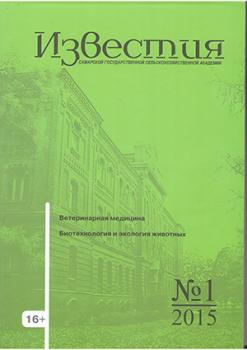Volgograd, Volgograd, Russian Federation
Volgograd, Volgograd, Russian Federation
GRNTI 68.35 Растениеводство
OKSO 35.02.05 Агрономия
TBK 5611 Общее растениеводство. Земледелие. Агротехника
The purpose of researches is increasing of water soluble fertilizers application efficiency at cultivation of sweet pep-per on the subtype of the light-chestnut soils of Volgograd region. The effect of mineral fertilizers on sweet pepper was studied. It is proved that the fertilizer of new generation – mineral water soluble fertilizer Rastvorin the increased productivity of fruit pepper. In field experiments on the study of the productivity of sweet pepper were studied in the following varieties and hybrids: Podarok Moldovy (as standard), Paphos, F1, Pompeo F1. Selected varieties and hybrids were sown with a seeding rate of 1 million viable seeds per hectare. The experience was repeated three times. The location of the plots was systematic. Seeding was carried out in early April to 4 lowercase scheme with mandatory postsowing packing by ring-heel rollers. The most promising for soil-climatic conditions of the Low Volga Region varieties and hybrids of sweet pepper possessing high adaptive capacity and significant potential yield, in combination with the optimal level of mineral nutrition and water use. Fertilizer application increased the fruit weight of a standard average factor by 25-50% compared to unfertilized variant. Maximum weight standard fruit was on the variant with application of water soluble fertilizers Rastvorin – 0.32…0.40 kg as a result of tests it was found that water-soluble fertilizer with trace elements Rastvorin are an effective factor in increasing yield of fruits of sweet pepper in the conditions of the Low Volga Region. On the basis of the conducted research of the Low Volga Region it is possible to recommend promising hybrid sweet pepper – Pompeo F1, which is able to generate yield above the standard of 53.3 %
pepper, cultivar, hybrid, fertilizer, yield, mineral, water soluble
1. Bajrambekov, Sh. B. Guidelines for the application of plant growth regulators on vegetables, melons and pota-toes : methodical recommendations / Sh. B. Beyrambekov. - Astrakhan : Gloriya, ZAO, 2009. - 78 p.
2. Druzhkin A. F. Fundamentals of scientific research in agronomy. Vol. 2. Biometrics : textbook / A. F. Druzhkin, Z. D. Lyashenko, M. A. Panina. - Saratov. - 2009. - 70 p.
3. Kalmykova, E. V. Methods of improving the productivity of tomato and potato under irrigation in the Povolzh'e / E. V. Kalmykova, N. Y. Petrov, V. B. Narushev, T. I. Khorishko // Agricultural research magazine. - 2017. - № 4. - P. 36-40.
4. Kalmykova, E. V. Efficiency of application of growth regulators in the Lower Volga region / E. V. Kalmykova,N.Y. Petrov, V. O. Kalmykova // Science today: the facts, trends, forecasts : mat. International sci.-pract. conf. - Vologda, 2017. - P. 61-63.
5. Kalmykova, E .V. Influence of agronomic practices on growth, development and productivity of tomato in the Lower Volga region / E. V. Kalmykova, N. Y. Petrov, S. V. Ubushaeva, V. A. Batyrov // Bulletin Nizhnevolzhsky agro-diversity complex: science and higher professional education. - 2017. - № 2. - P. 111-118.
6. Kalmykova, E. V. Productivity of tomato in the Lower Volga region / E. V. Kalmykova, N. Y. Petrov, V. O. Kal-mykova // Innovative research: theory, methodology, practice : mat. International sci.-pract. conf. - Penza, 2017. - P. 162-165.
7. Vegetable of the future: new knowledge and ideas : mat. International sci.-pract. conf. - M. - 2012. - 378 p.
8. Sutormina, A. V. Influence of maturity on the persistence and quality of fruits of tomato varieties Yakhont // Bulle-tin Michurin SAU, 2014. - №. 2. - P. 14-18.
9. Tumanyan, A. F. Farming cultivation of tomatoes in arid zone / A. F. Tumanyan, Tkhan' Diep Kha Tkhi // Scien-tific-agricultural journal. - 2010. - № 2-1 (87). - P. 38-42.
10. Yudaev, I. V. pre-sowing seed treatment: the experience of the Nizhnee Povolzh'e / I. V. Yudaev, E. V. Azarov, M. N. Belitskaya, I. R. Gribust // Energetics and automation. - 2013 - № 3. - P. 48-54.





